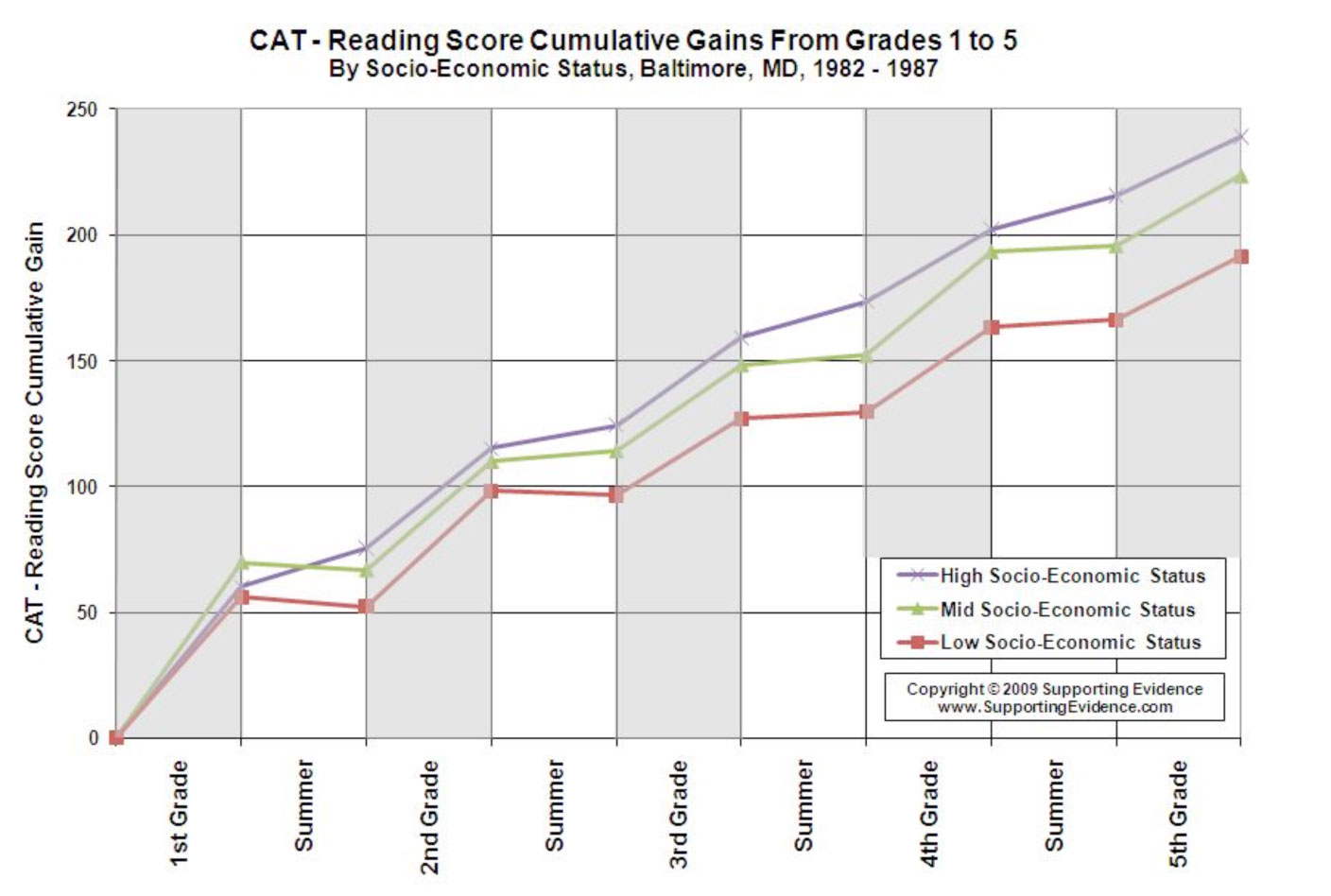How do students of different socio-economic statuses learn during the school year and over the summer break?
Why is this question important? Generally, society entrusts the formal education system with teaching children the academic skills they need to be successful and consider summer learning to be a secondary influence at most. Vast sums of time and money are invested in improving educational results at school, while generally little thought is given to improving summer learning.
See further discussion below.
Source(s): Schools, Achievement, and Inequality: A Seasonal Perspective. Educational Evaluation and Policy Analysis, Vol. 23, No. 2, pp. 171-191 (2001) http://epa.sagepub.com/cgi/content/abstract/23/2/171
Result(s): Students of low, mid, and high socio-economic status (SES) ended first grade with small differences in reading scores but increasingly stratified as they progressed to fifth grade, with high-SES students achieving the highest scores, followed by mid-SES students, and low-SES students with the lowest scores. Score gains during the school year were similar for all three SES levels. Differences in summer gains were the primary cause of stratification of scores by SES level.
Implication(s): Students of various SES levels generally learned equally well during the school year. Summer learning was the primary cause of increasing test score stratification as students progressed from first to fifth grade. Improved summer learning experiences could be the place to focus education investment for low-SES students, instead of during-school interventions.
Author(s): K. L. Alexander, D. R. Entwisle, and L. S. Olson, L.S.,
Publisher(s): Educational Evaluation and Policy Analysis
Study Description: Reading test results of 665 students in Baltimore, Maryland, were compared at the beginning and end of each school year, from first to fifth grade. Differences between scores at the beginning and end of each school year were attributed to school learning, and differences between scores at the end of one school year and the start of the next were attributed to summer learning. The test applied was the California Achievement Test-Reading Comprehension (CAT-V). Socio-economic status was classified into three levels based on a composite of mother's and father's educational levels, mother and father employed or unemployed, and whether the student received reduced-priced school meals; an indicator of income level relative to family size.
Definition(s): SES = Socio-economic status
CAT-V = California Achievement Test-Reading Comprehension
Citation:
Related Research:
Citation: Alexander, K. L., D. R. Entwisle, and L. S. Olson (2001). Schools, Achievement, and Inequality: A Seasonal Perspective. Educational Evaluation and Policy Analysis, Vol. 23, No. 2, pp. 171-191.

